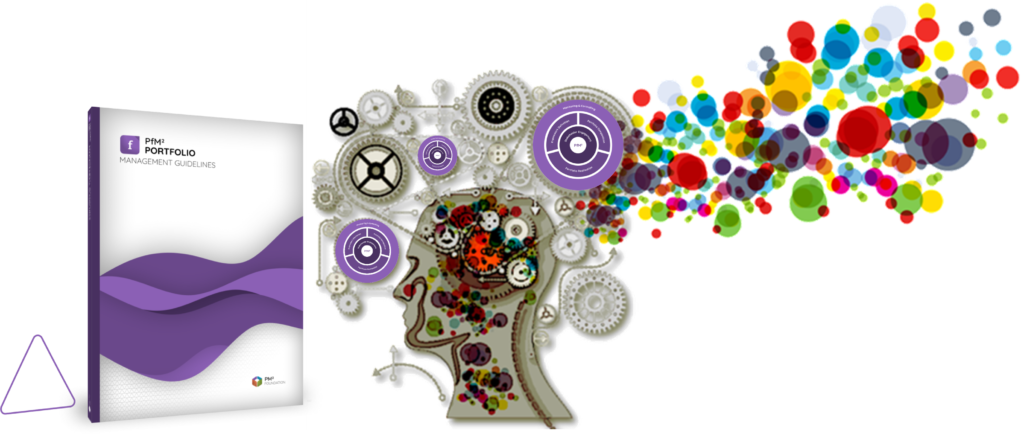While governance, plans and processes help us with what we could refer to as the administrative side of portfolio management, the right Mindsets help us develop a portfolio orientation and navigate the complex reality of portfolio management within organisations.
Portfolio mindsets are an essential part of any portfolio methodology. Just as we establish procedures to help us manage a portfolio better, so we define portfolio mindsets to help us develop the attitudes and behaviours that will allow us to contribute to the portfolio’s success. They provide us with a common set of beliefs and values that become the glue that holds management processes and practices together across all an organization’s (sub)portfolios.
Effective portfolio mindsets can help us manage the organisational politics that (always) come with portfolio managment
To start developing the right portfolio mindsets, we should ask ourselves the following Infrequently Asked Questions (IAQs):
- Do we know what we are doing? Tip: Develop a clear portfolio vision and define portfolio objectives that clearly connect to organisational strategy. Establish success criteria by defining upfront the benefits we expect the portfolio realisation to bring to the organisation.
- Do we know how we are doing it? Tip: Establish a portfolio management approach that acts as a performance enabler, not as another layer of control and bureaucracy. Implement portfolio management at all levels as a fractal organisation and ensure that the management methods used at the portfolio components level are standardized and aligned with the portfolio methods.
- Do we know how much we can do? Tip: Be realistic about portfolio investment requirements and acknowledge organisational capacity and capability constraints. Ensure we allocate adequate resources, capabilities and skills to our portfolio components to provide the effort, skills and support infrastructure needed for the management of the portfolio.
- Does anyone care? Tip: Establish and maintain strong senior management sponsorship and organisation-wide buy-in. Make sure that your portfolio’s performance matters and that your portfolio reporting serves a range of informational needs.
- Are the right people involved? Tip: The primary criterion for assigning portfolio management roles should be to serve the needs and objectives of the portfolio, not organisational politics, the functional hierarchy, etc.
- Do we know who is doing what? Tip: Clearly define portfolio governance and understand portfolio roles, responsibilities and accountabilities. Know what you should be doing and make sure others know what they should be doing, too.
- Deliver at any cost or risk? Tip: Show respect for people’s efforts and organisational funds. Pursue the interests of the portfolio and the organisation by embracing positive values and principles. Always remember that it isn’t just about the end-result; how you get there matters, too.
- Is this important? Tip: Everything is NOT equally important. Identify your portfolio’s Critical Success Factors (CSFs) and allocate your attention and effort accordingly.
- Is this a task for them or for us? Tip: Understand and respect the difference between functional roles and authority on the one hand, and portfolio management roles, responsibility and goals on the other. Make the performance of portfolio components visible but focus on overall portfolio performance.
- Should I be involved? Tip: Contribute from any position. Be proud of the skills, value and positive attitude you bring to the portfolio. Help everyone who needs to be involved get involved. Foster clear, effective and frequent communication and facilitate the engagement of all portfolio stakeholders.
- Have we improved? Tip: Commit to ongoing professional and organisational improvement by sharing knowledge and lessons learned. Follow portfolio procedures but challenge wasteful practices and update the portfolio management framework when/if needed. Become more effective by adjusting approaches and behaviours accordingly.

The PfM² Portfolio Mindsets are condensed in the following statements which express the commitment of people involved in portfolio management to:
- Apply PfM² portfolio best practices to manage their portfolios.
- Remain mindful that portfolio management processes are there to serve the portfolio and organisational goals and not the other way around.
- Maintain an outcomes orientation towards all portfolio management activities.
- Commit to delivering portfolio results with maximum value, rather than just following procedures and plans. Manage the portfolio holistically by optimising the whole portfolio, not just parts of it.
- Provide strategic direction and support to the component levels, but without interfering in their daily management or asking them for additional reporting.
- Foster a culture of cross-organisational collaboration, clear communication and accountability.
- Encourage the management of issues and decisions at the lowest possible governance level, while providing clear escalation channels and procedures.
- Assign portfolio roles to the most appropriate people for the long-term benefit of the portfolio and the organisation.
- Balance in the most productive way the often conflicting management Ps of Process, People, Pleasure/Pain, Progress, Participation, Perception, Power, Politics and Peace.
- Invest in developing technical and behavioural competences to become better portfolio contributors.
- Engage portfolio stakeholders and involve them in the organisational change needed to maximise portfolio outcomes and benefits.
- Share knowledge and actively manage Lessons Learned and contribute to the improvement of portfolio management within organisations.
- Draw inspiration from the PfM² Guidelines on Ethics and Professional Virtues.
Although complimentary, effective Portfolio Mindsets are quite different from Project Mindsets
Working with these Mindsets enhances the effectiveness of portfolio management and thus increases the likelihood of a portfolio achieving its goals. Beyond that, applying the Mindsets consistently across sub-portfolios helps to build capacity within the organisation over time; as the methodology and mindsets embed themselves in an organization’s working practices, it helps it achieve management maturity.
Viewing our involvement in portfolio management through the lenses of effective Mindsets doesn’t only make for a more colourful world; it also means we all see the same colours. When everyone across our entire organisation is wearing the same glasses, it makes us more effective and productive.
See also:
-
- Watch a video about the PM² Mindsets (Open PM² Conference, 2018)